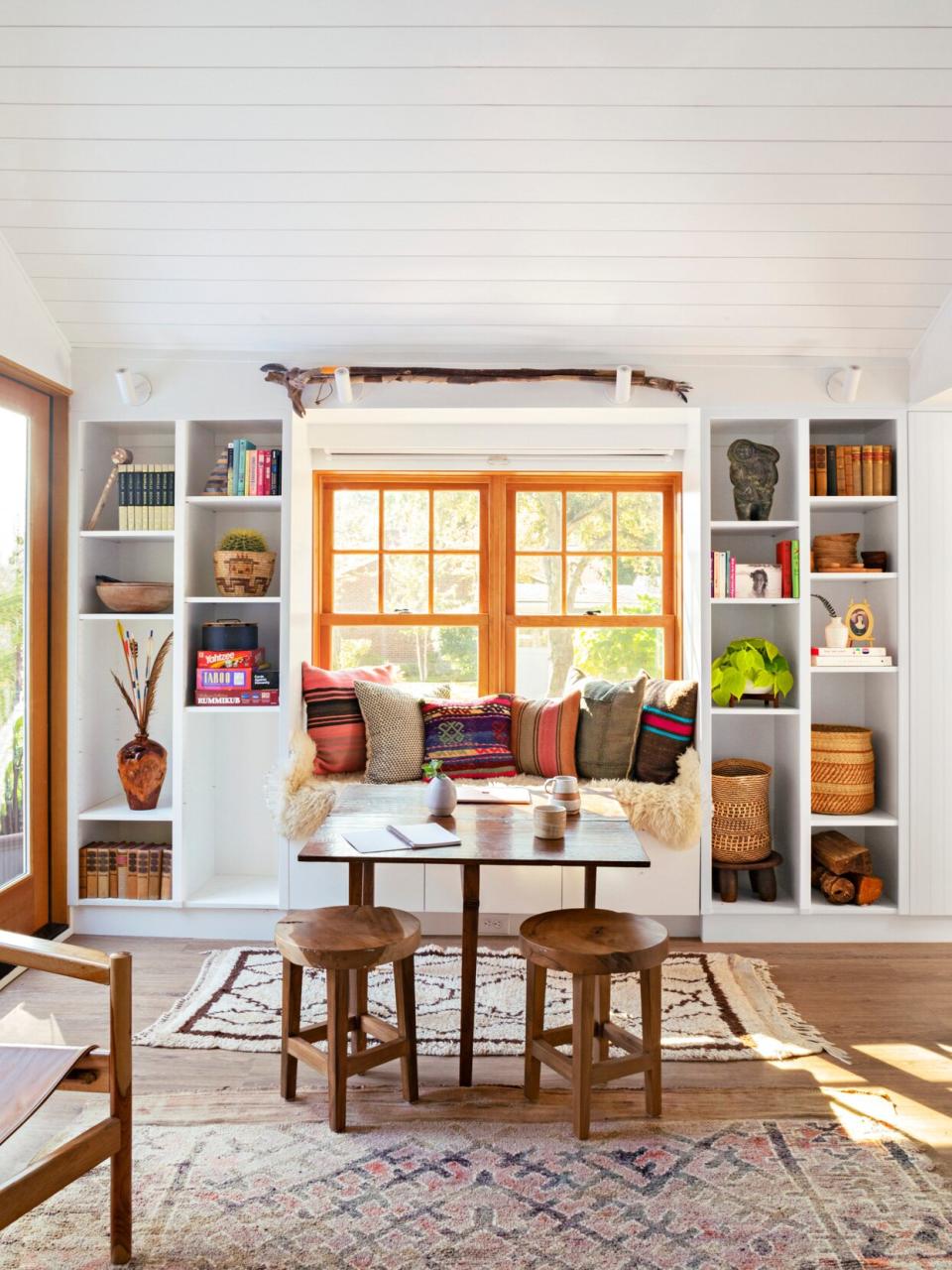This 480-Square-Foot Garage Became a Tiny House Perfectly Suited for Guests
Seattle designer Hayley Francis and her dad, Ken, decided it was time to add more sleepover space to accommodate the steady stream of visitors to the family beach home on Washington's South Puget Sound. They turned 480 square feet of shed space into a place where several guests at a time can sleep, watch TV, work, cook, and shower—without adding on or building up. The result? One ultra-efficient tiny house with multifunctional furniture, gourmet kitchen amenities, and a bathroom with a layout twist.

Ellie Lillstrom
Hayley Francis grew up spending summers and weekends at the family beach house. She remembers beachcombing and making art projects with her late mother, Laurie, also a designer. Hayley still visits regularly, as do her sister, nieces, and nephew, so creating the tiny home was all about making more space for the family to gather and keeping the special times going. "It was a dream project," she says.

Ellie Lillstrom
The original garage had always been used more for tools than cars because the property also included a carport. For construction efficiency, a crew turned the carport into a garage at the same time they made the garage into living quarters.

Ellie Lillstrom
With the help of Seattle architect/designer Seth Grizzle of Graypants, Hayley incorporated a private bedroom, an efficient and stylish kitchen, and a small but luxe bathroom. Vaulted ceilings, French doors where the garage doors were, and generous windows make the guesthouse feel large and airy.
Budget-wise secondhand furniture and open shelving balance decorative extras such as brass plumbing fixtures and statement lighting. And for rainy days or movie nights, there's a built-in projector above the sleeper sofa and a pull-down screen mounted above the window seat.
Hayley uses this sitting spot for breakfast and when remotely running her design business, Neon Doves. The expandable table, an old family piece, pulls up to the window seat. The built-ins include niches tall enough to stow the stools.

Ellie Lillstrom
"I wanted a 'wall' kitchen, not a corner kitchen," Hayley says. "I felt it would make the space feel much more open." Because the setup is on full display, she gave it big-kitchen style with a wall-mount faucet and sconces in brass. The backsplash is only 3½×6½ feet, allowing her to use a single slab of soapstone. "I love soapstone it feels rocky. It's a way of being beachy without being literal," says Hayley.
A box beam upgrades the look of the ceiling peak and hides electrical wiring for light fixtures. To avoid a lineup of visible appliances, wood panels camouflage the refrigerator, and a pantry cabinet hides the microwave.

Ellie Lillstrom
Each room benefits from the spaciousness that comes with the vaulted ceiling. Vintage burled-wood nightstands, a caned headboard, and window trim all in the same tone ground the bedroom.
Related: 14 Essential Decorating Tips for a Welcoming, Well-Outfitted Guest Bedroom

Ellie Lillstrom
A door on the side of the house leads to the private spaces off the back hallway: bedroom, bathroom, and a loft that's accessible by a rolling ladder. A linen closet is opposite the bathroom door.

Ellie Lillstrom
Hayley took a cue from all-in-one European baths and specified a wet room: Hexagonal ceramic tiles cover all the surfaces, eliminating the need for a shower stall. "I've always wanted a fully tiled bath, and this ended up saving us space," she says.
The heated floor in the bathroom is a little luxury. It's a nice upgrade for a small space.
—Hayley francis

Ellie Lillstrom
Maximizing every inch, a custom cushion fills a berth built into the highest section of the ceiling. With no inches to spare for furniture, a wall sconce accommodates nighttime reading. A porthole window plays off the home's beach location.

Illustration by Christopher Mills
When it comes to the tiny home layout, smart floor plan decisions help everything fit without a squeeze. Keeping the living room light on furniture ups the flexibility. Shallow back-to-back closets provide more accessible storage than one deep one. A floating wall consolidates the plumbing and keeps the room from feeling cramped. And in the peaks above the kitchen and bath, lofted nooks add more useful space.

